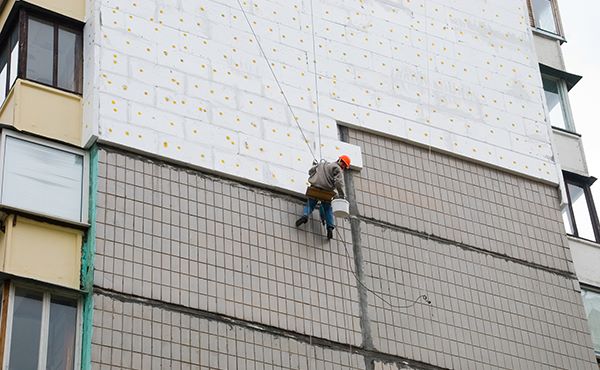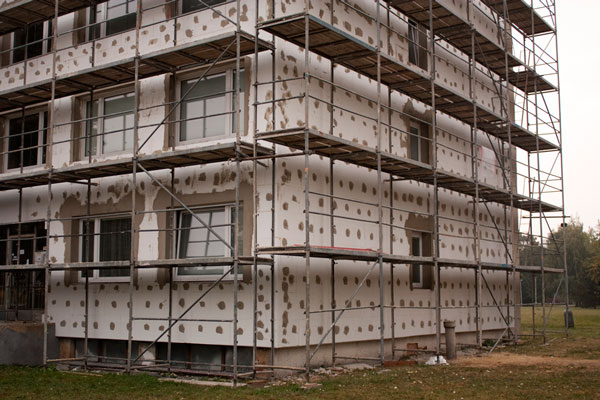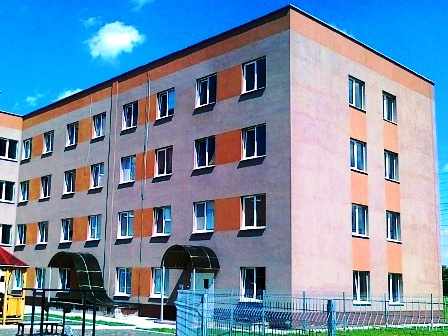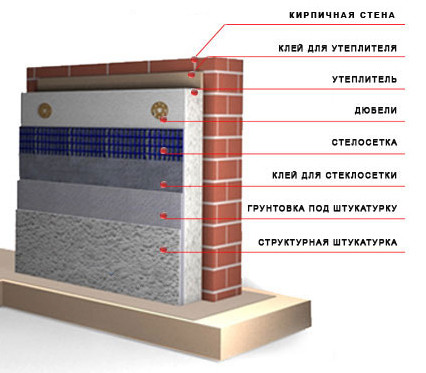In Russia, there is no unified document on the insulation of the facades of apartment buildings; in different cities and regions there are slightly different rules. In some regions of the country there are state programs for the insulation of high-rise buildings, and all work is carried out for budgetary funds. If your house was not among the lucky ones, then before performing the insulation you will have to contact the utilities.
The outer walls of the house are common property even if the apartment is privately owned. Since facade insulation will change the appearance of the house, coordination with utilities and local architects will be required. As a rule, there are no problems. It is enough just to go to the appropriate governing body and write a petition, and the chances of getting a positive answer increase if the petition is written simultaneously by several tenants who want to insulate their apartments. In addition, joint one-piece insulation of the facade is many times more effective and better than the "patchwork" technology of thermal insulation. 
You may be denied your application if the house is of historical value. In Moscow, it is almost impossible to obtain permission to insulate only one apartment - work can only be carried out if the whole house is insulated at once. In some regions, insulation will be possible if all residents of the house do not mind.
In Ukraine, the exterior walls of a house are also joint property of residents, and, in theory, all decisions regarding changing their appearance should be made at the appropriate meetings. In practice, no one does this, everyone insulates themselves without asking permission from their neighbors. Such an amateur activity may end in a court or a meeting of owners, who collectively decide to dismantle the insulation, and this decision will be completely legal. In fact, there are practically no precedents. 
No. 3. Who pays for the insulation of an apartment building?
If you decided to insulate only the outer walls of your apartment and did not ask anyone, then you will pay for everything yourself. There is also a more attractive option, but it requires the active participation of all residents of the house. If you prove that the house needs insulation, and without it it is not suitable for normal living, then you can get funds for insulation from the budget of the council or the management company. In addition, in some regions there are programs for the gradual comprehensive insulation of apartment buildings.
Residents of Ukraine can also significantly save on. There are state programs aimed at improving the thermal efficiency of residential buildings. They apply only to houses that are completely insulated, and not stained. Of course, agreeing on all the necessary details will take time and patience, but complex insulation will give much better results, and all work will be much cheaper than with individual "patchwork" insulation. State programs provide for reimbursement of up to 50% of the cost of insulation work. The banks have concessional lending terms for the insulation of apartments: the state repays from 30-40 to 70% of the loan. 
No. 4. What's wrong with spot insulation of an apartment building?
It is worth driving through a number of post-Soviet cities, as we will see the same picture that is not pleasing to the eye - the walls of high-rise buildings are completely covered with spots of different colors. The tenants are trying to make their apartment more comfortable. Of course, this sight does not cause any disgust, irritation, or any other negative reactions in someone, but the main problem is not even the appearance, but the quality of such insulation, its durability and the safety of the walls of the house.
The boundaries of the insulation of a separate apartment go exactly along the floor slabs. In these places the dew point shifts sharply from the insulation into the wall, which leads to moisture condensation and the risk of mold, and the fungus can appear both in an insulated apartment (at the junction of the wall with the ceiling and floor), and in neighboring apartments. The difference in temperature of the facade wall in neighboring areas also does not benefit the house. As a result, we can speak not only about the problem of high humidity, but also about the gradual destruction of the main wall. 
One more problem - constant wetting of the upper end of the thermal insulation... Although they try to close it in every possible way from precipitation, the constant exposure to moisture and the accumulation of snow gradually destroys the adhesive fastening of the thermal insulation and opens up access to water. It is difficult to create a continuous contour of thermal insulation, therefore, complete tightness of the insulation section is almost impossible. We will not talk more about the aesthetic problem of point insulation.
Ideally, it is necessary to negotiate and insulate the facade of the house completely, from to, the more it will cost less than individual insulation, even if you do not use any programs and benefits.
No. 5. Thermal insulation technologies for the facade of an apartment building
There are two fundamentally different ways to insulate the facade of a high-rise building:

No. 6. The choice of material for insulation of an apartment building
Today, foam and mineral wool are often used to insulate apartment buildings, but there are much more options, and each of them will be most preferable in specific cases. So, you can choose from the following options:
It is worth paying only a little attention to the study of various technologies and heaters, the choice of a reliable contractor in order to enjoy the comfort in the apartment for years and save on utilities. If you include all your communication and organizational skills, then it will be very cheap to insulate the whole house and your apartment in particular. Since it is sometimes impossible to negotiate with neighbors, and point insulation cannot be avoided, try at least to find the most qualified and responsible team of performers and ask what materials they use.




